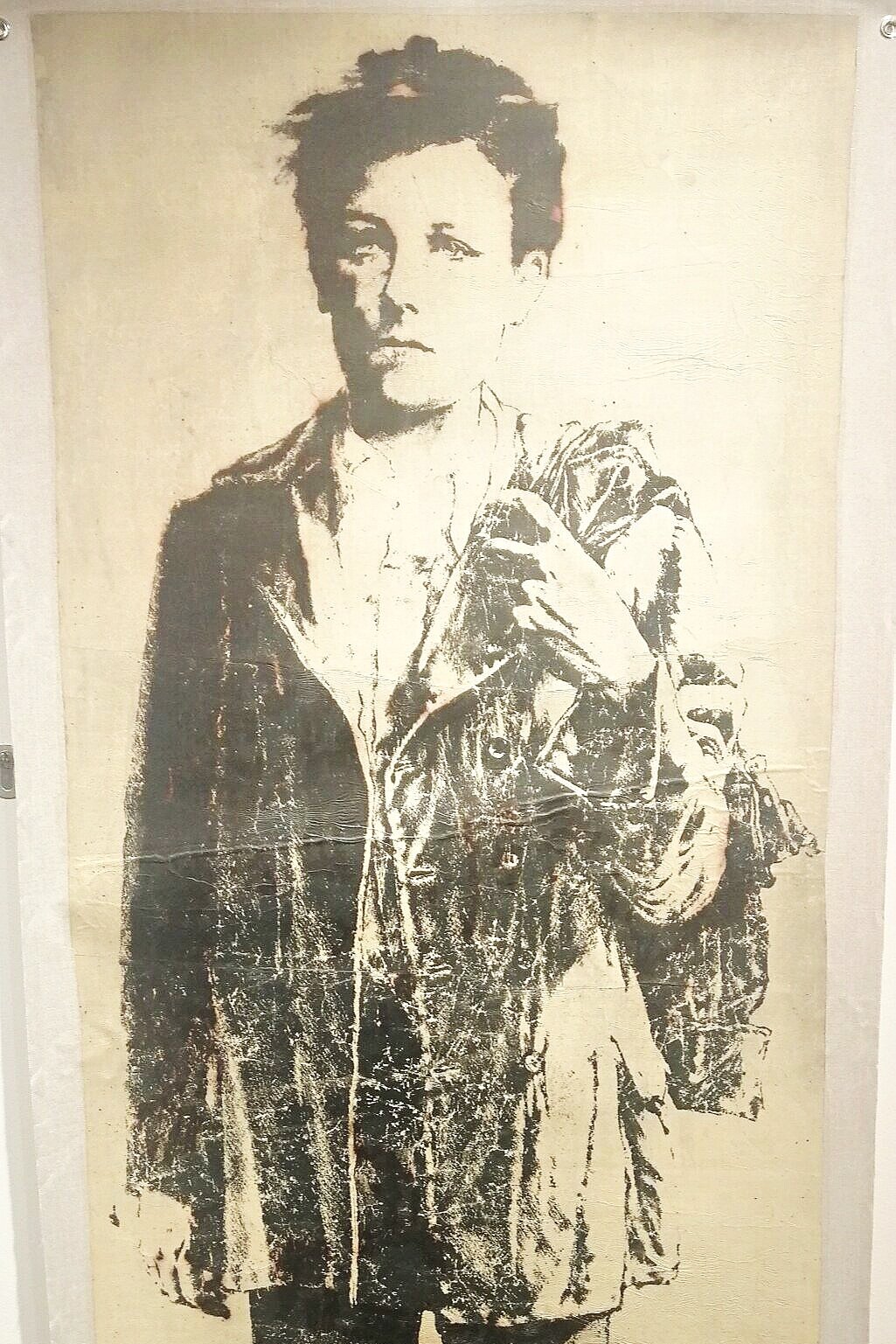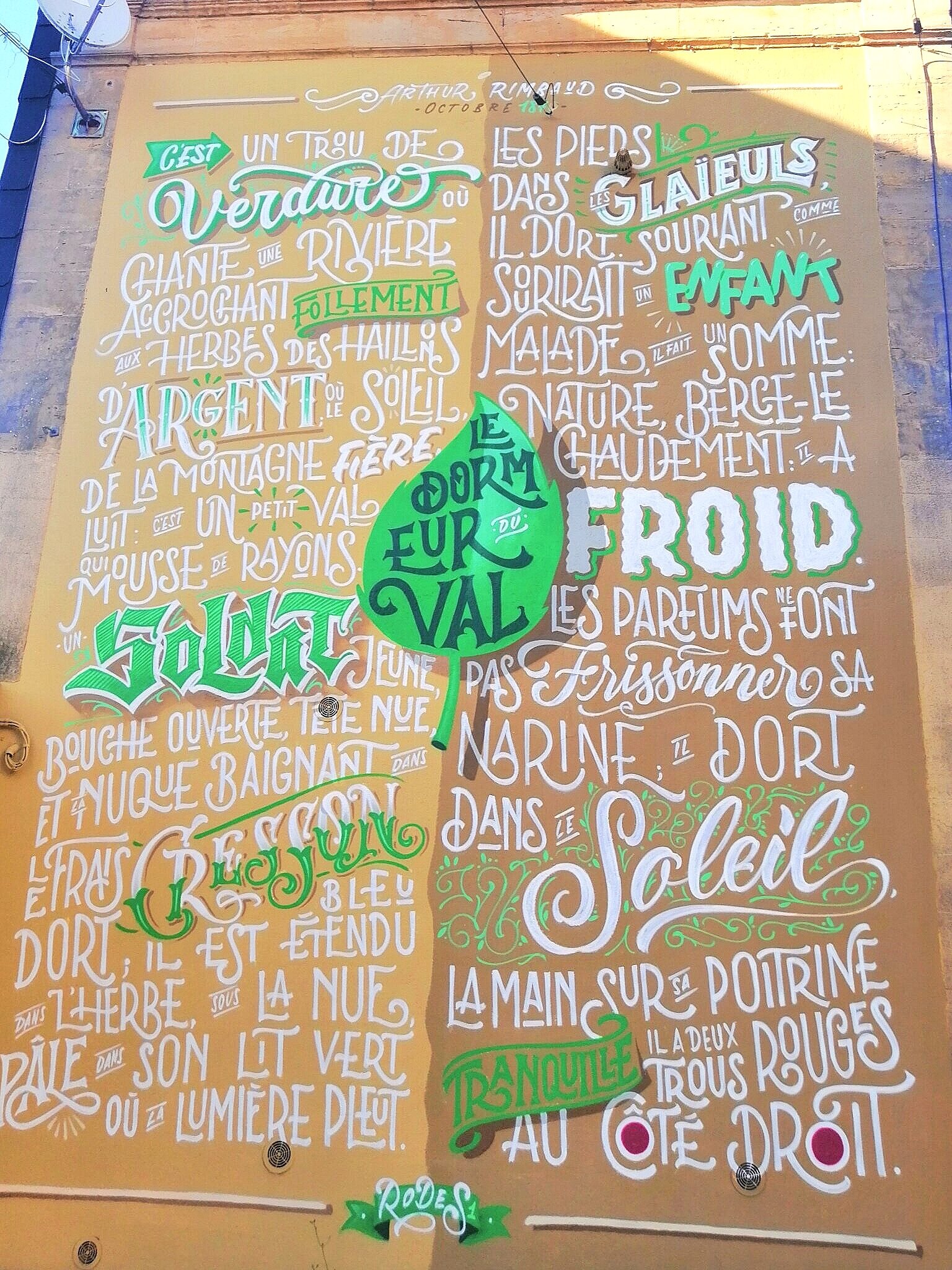A Day in Rimbaud Land
Arthur Rimbaud
Image | Nina Seffusatti
In Charleville-Mézière in the northeast of France is a 17th century mill on a branch of the river Meuse, now the Rimbaud Museum, and behind it is a beautiful and peaceful park where Patti Smith did a concert in 2004. A park that doesn't look big enough for an international rock star like Patti Smith. The concert was organized for the 150th anniversary for the birth of the French poet Arthur Rimbaud, who was born and buried here in Charleville, and whose work has been translated into over 40 languages. But what does Rimbaud have to do with Patti Smith? In the introduction to «The Anchor Anthology of French Poetry», she writes: «When I was sixteen, working in a non-union factory in a small South Jersey town, my salvation and respite from my dismal surroundings was a battered copy of Arthur Rimbaud's «Illuminations», which I kept in my back pocket». The suite of prose poems «Illuminations», written by 20-year-old Rimbaud in 1874, has also been an inspiration for composers like Benjamin Britten. The work and life of Rimbaud have been important for the Symbolists, Dadaists and Surrealists, for the writers Henry Miller, Dylan Thomas, Vladimir Nabokov, Jack Kerouac, Allen Ginsberg, and for singers and poets like Bob Dylan, Jim Morrison, and many others.
As a high school and college student, I studied Rimbaud's poems, and I did retain a few famous phrases; one of them is «Je suis un autre» (I am another) – meaning that the inner self is something else, undefined and foreign – and as for so many other readers of Rimbaud's phrase, it struck a chord in my searching young self. But I was even more fascinated by the boy poet—the enfant terrible—his tumultuous life, and his self-imposed exile. By his romantic relations with the French poet Verlaine and their wild, bohemian life spiced by absinthe and hashish. By his convictions, being a rebel in a bourgeois, catholic society. Rimbaud's writing lasted only five intense years. His first poems were written at the age of sixteen in 1869, and at the age of twenty-one, he abandoned literature forever to become a traveller and a colonial trader in Africa. After his death at the age of thirty-seven, his work became known worldwide--the French author Victor Hugo described Rimbaud as «an infant Shakespeare».
So here I am in Charleville, ready for a pilgrimage. What is left in Charleville today? Where can you walk in Rimbaud's footsteps? I started in the Rimbaud Museum in the Old Mill. In 1954, the city opened a room devoted to Rimbaud in the municipal museum, in 1969 they moved the collection to the former mill, and finally in 2015 the museum was renovated and reflects beautifully the poet's life and work. In the attic you can listen to oral readings of his poems. Going down through the museum you find the rooms of «musings» and «revolutions,» about the periods of drama and trauma, with historical documents, manuscripts and letters. Finally, you reach the last level about «travels», when Rimbaud no longer wrote poetry. Between 1875 and 1879 - when he became, as a friend said, «l'homme aux semelles de vent'»(``the man with the soles of wind'') - he's constantly in motion, traveling in England, Germany, Italy, Austria, and Cyprus. Here, you see some personal belongings from Rimbaud's travels and work in Ethiopia and Yemen, such ashis travel cutlery, a geography book, his watch, suitcase, and maps.
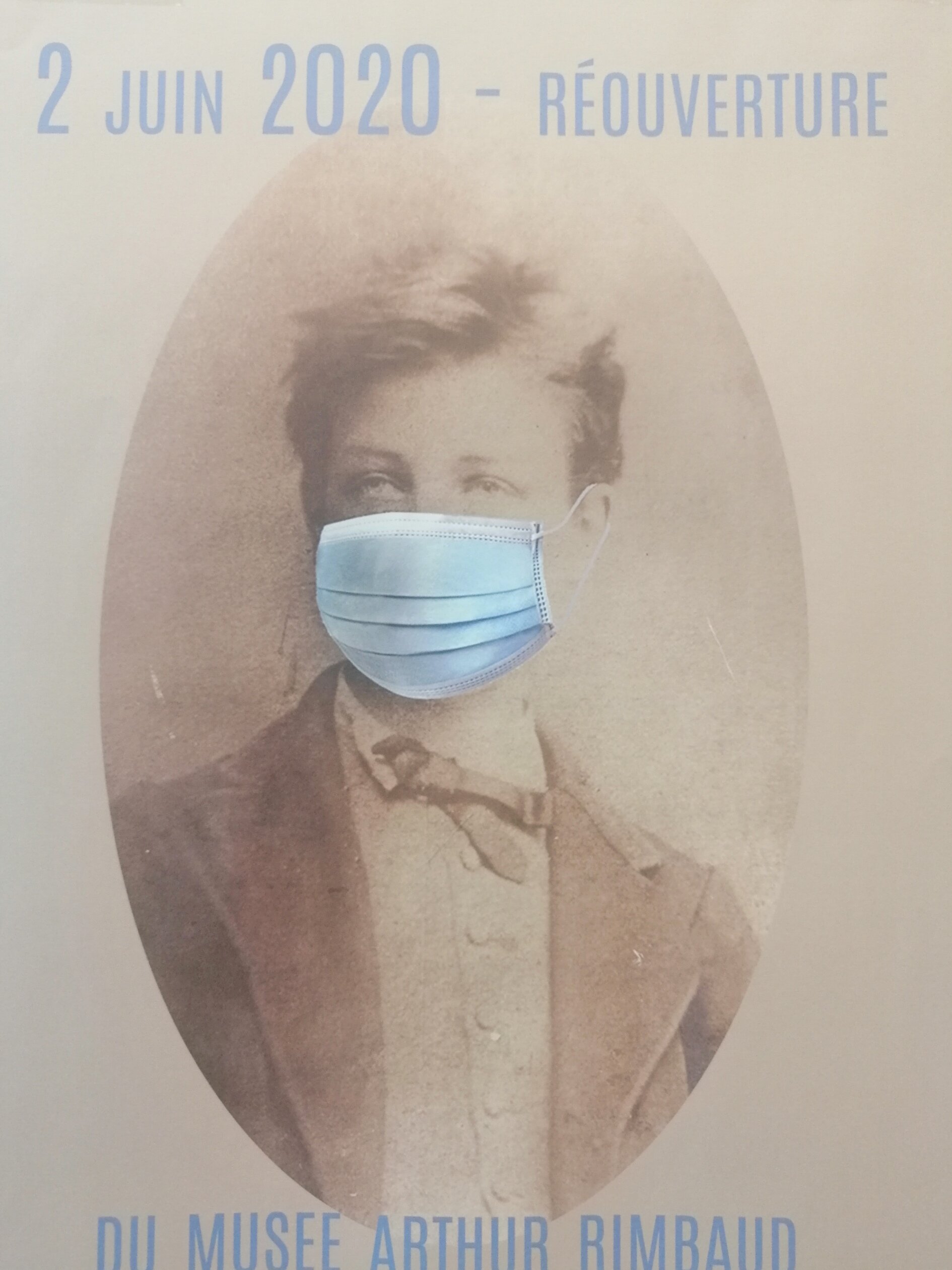
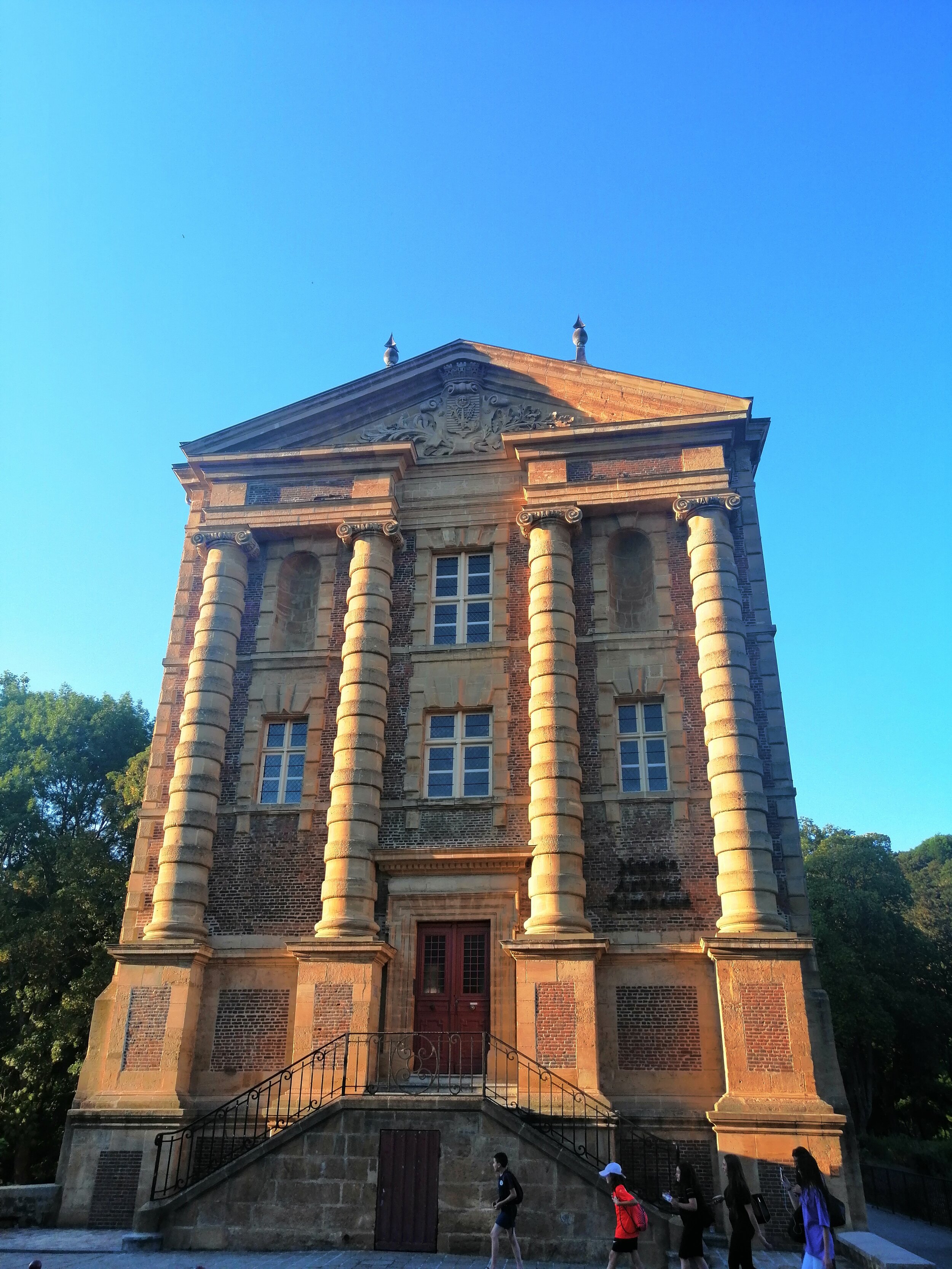
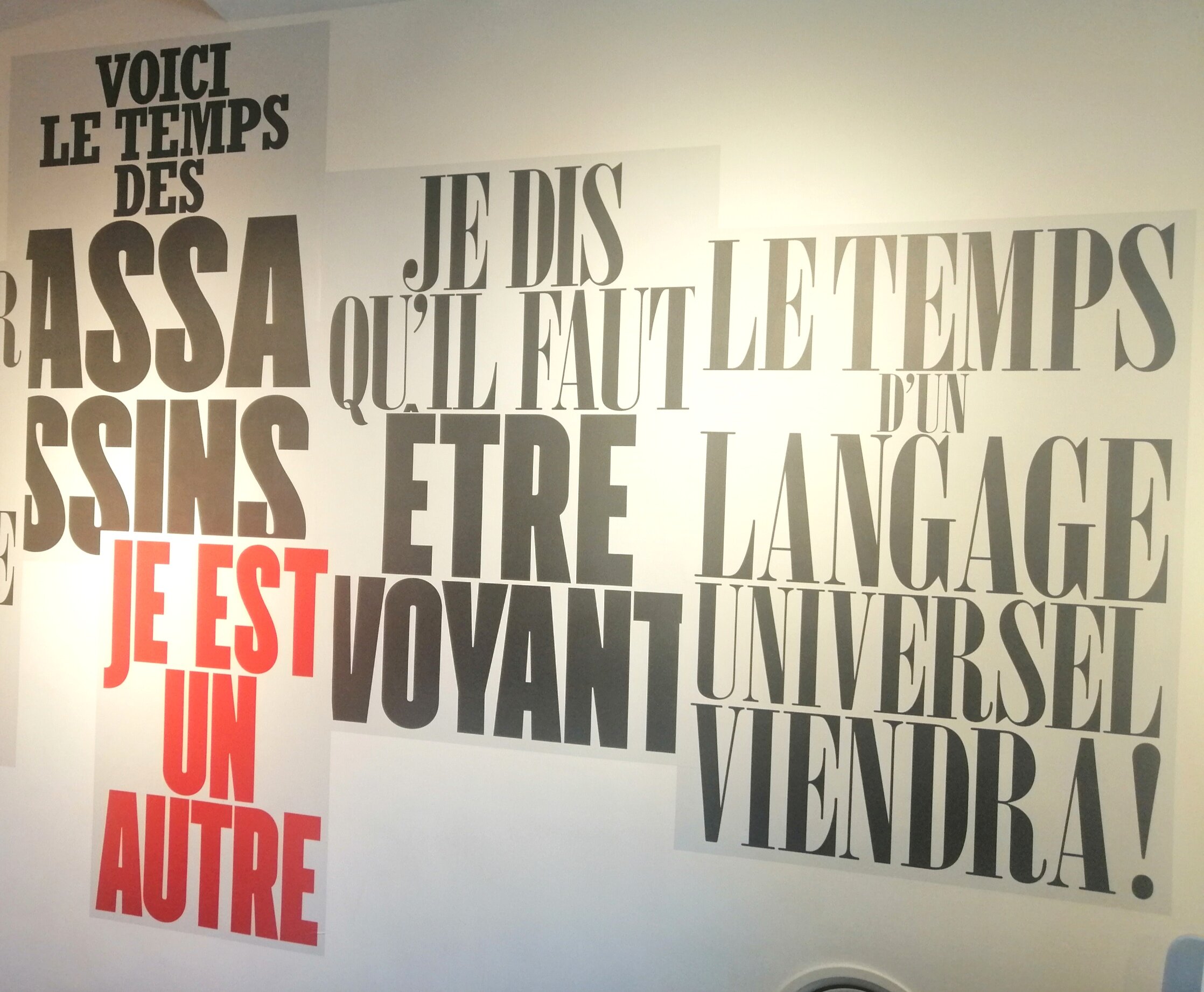

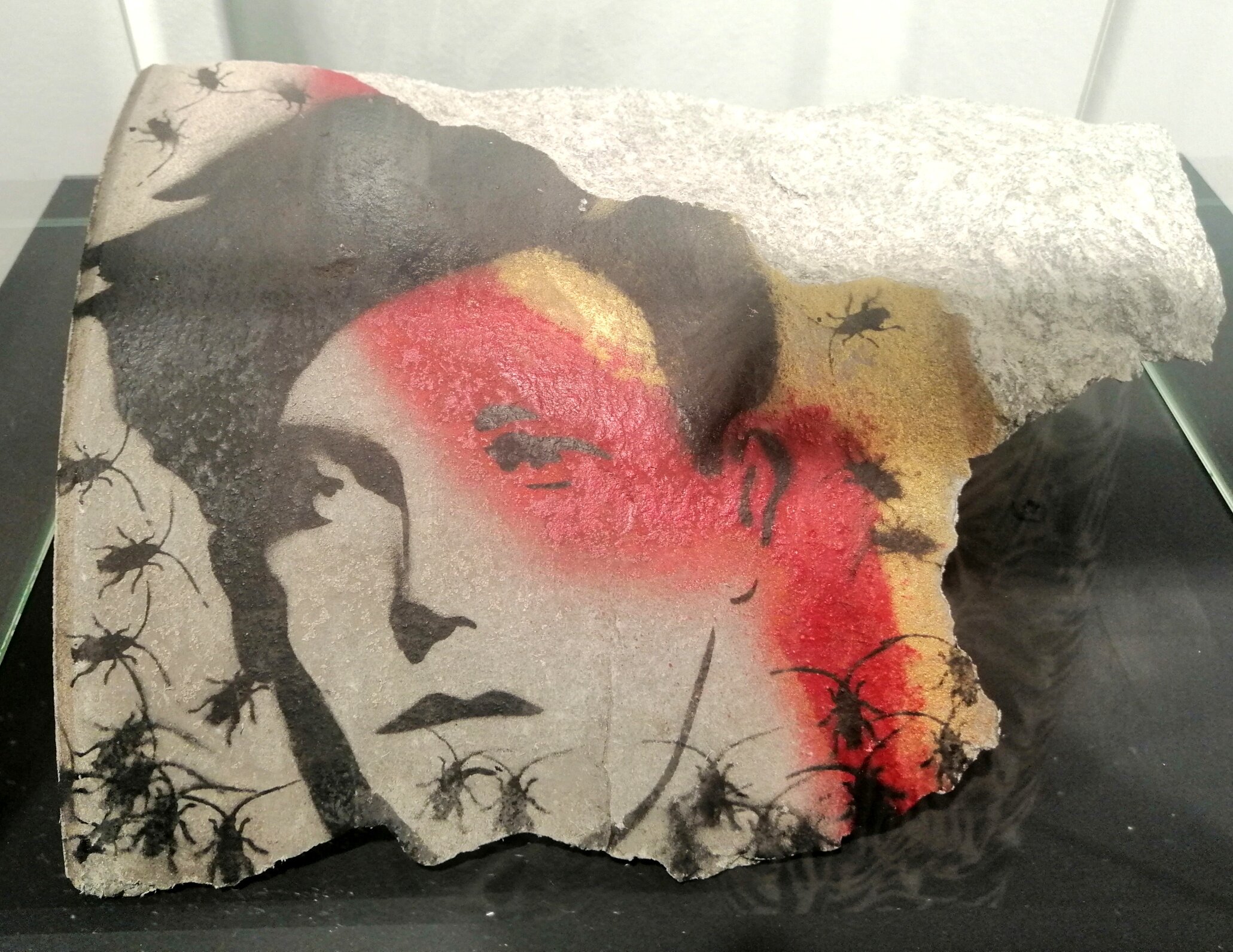
There are also several portraits of Rimbaud in the museum, one by Patti Smith from 1973 and others by contemporary artists like Picasso. There is even one by unknown artist on a bit of the Berlin Wall.
To continue in the footsteps of "the man with soles of wind" in the streets of Charleville, I cross the street from the museum to enter the Maison des Ailleurs (The House of Elsewhere), where Rimbaud lived from 1869 to 1875. Today it is a centre assigned to the poet and his work, with contemporary artwork. Walking around in the empty rooms, which have no furniture or objects, is quite emotional, as Rimbaud's words and ideas are illustrated by modern art installations. But a pilgrim does not live on spiritual and intellectual food alone; I am starting to need some more consistent nutrition. On my way down the main street, I find a tempting delicious patisserie, and—surprise!—they sell chocolate boxes called «Rimbaud». [nina.seffusatti_Charleville_RimbaudChocolate.jpg]
<<Rimbaud>> book-box of chocolates
Image | Nina Seffusatti
Then on to an architectural «sister» of the Place des Vosges in Paris, the main square Place Ducale, where Rimbaud was a frequent visitor to the Café Dutherme. Of course I have to enjoy a lovely local beer, the Cuvée d'Arthur. Continuing down the main street, in a local bookshop, obviously called Librairie Rimbaud, I find all kinds of editions of the poet's work, biographies, and postcards.
Place Ducale—one of Rimbaud’s favorite haunts
Image | Nina Seffusatti
Cuvée d’Arthur—a delightful local beer
Image | Nina Seffusatti
Librairie Rimbaud
Image | Nina Seffusatti
What's next? The tourist office gave me a wonderful, free guide to the Arthur Rimbaud Trail, with 6 different modern frescoes depicting some of the poems on city walls. What a great homage! Here are two of them, Ophélie and Le dormeur du Val.
Ophélie by Mehdi Amghar (aka, Dizat)
Image | Nina Seffusatti
Le Dormeur du Val by Dorian Jaillon (aka, Rodes)
Image | Nina Seffusatti
It's the end of the day, and I've reached the cemetery with Rimbaud's grave. The tombstone is very simple, no flowers or objects decorating it. Only the words «Jean Nicolas Arthur Rimbaud, 37 ans, 10 novembre 1891. Priez pour lui» (Pray for him). I stand there for a while, thinking about the poet's words that changed modern poetry, words that have been accompanying me through the city, taking me into his life, mind, and travels. And I have combined my love for Patti Smith's and Rimbaud's work; it has been a perfect day.
Jean-Nicolas Arthur Rimbaud | 37 years | 10 November 1891 | Pray for him
Image | Nina Seffusatti
So even though Arthur Rimbaud did not think much of Charleville – in a letter to his former school master, he wrote in November 1870, «I am back in Charleville.. I am dying, I am rotting away in dreariness, badness, in grizzle» - the city has succeeded in creating an inspiring walk in «Rimbaud Land», the poet is visible through museums, sculptures, and inscriptions. And also a quite profitable business with chocolates, beer, t-shirts, postcards, and books. What would Arthur Rimbaud say, if he could have seen that?
On my drive back, obviously listening to Patti Smith's music, the road takes me through the beautiful Ardennes landscape, with so many monuments and cemeteries from WWI. I have to stop at Rimbaud's family house, where he wrote «A Season in Hell» at the age of 18. It is situated in a tiny hamlet 25 miles south of Charleville, and has been the property of Patti Smith since 2017--her idea is to create a writers' residence here. If I didn't know better, I would just see a house with an unattended front garden. But here, there's a sculpture next to the house with the words «Ici Rimbaud a écrit son chef d'oeuvre, Une Saison en Enfer» (Here Rimbaud wrote his masterpiece, «A Season in Hell»). There is an inscription on the house «Place Arthur Rimbaud. Sur ces lieux Rimbaud a espéré, a désespéré et souffert». (Square Arthur Rimbaud. Here Rimbaud hoped, despaired, and suffered). Again I have a long moment of just observing and reflecting on my day, on the boy poet. It's quiet out here in the countryside. It feels good to digest the many impressions and simmer down after a long day in Rimbaud Land. I'll go home, to read Arthur's poems while listening to Patti's music…
I lift off with my hands in my torn pockets,
My overcoat worn down to a notion;
Walking beneath the sky, Muse! I was all yours,
And – oh my! - what fabulous loves I dreamed of!
— My Bohemia (Fantasy), Arthur Rimbaud
Arthur Rimbaud’s home: “Here, Rimbaud wrote his masterpiece.”
Image | Nina Seffusatti
Translations of quotes by Rimbaud from: «Arthur Rimbaud – Selected poems and letters» (Penguin Classics 2004)

